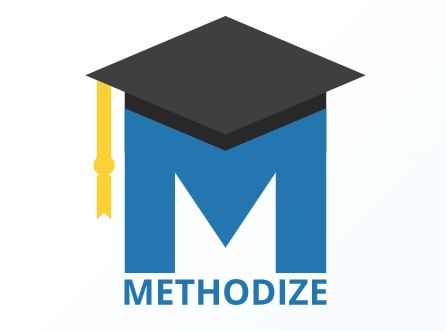What a Test Prep Expert Advises for the Class of 2023

Since the COVID-19 pandemic began disrupting American education, I have held webinars for thousands of people across the country, many of whom have been parents and students seeking advice about standardized testing strategies amid the unprecedented uncertainty. My advice for the Class of 2023 (current 10th graders)? Focus on your academic coursework right now.When evaluating an application, college admissions officers start by asking two questions: "did this student take the most challenging courses his/her high school provides?" and "how well did the student perform?". With this in mind, it doesn't make sense to spend time during your sophomore year doing specific ACT or SAT prep; put all of the hours you allocate to academics into your coursework. If you're taking challenging courses, you should be spending significant time completing homework and studying the material. The good news is that much of the work you do for these classes will help prepare you for the ACT and SAT. Learning math concepts, developing your reading comprehension skills, and gaining fluency in the intricacies of the English language will prime you for standardized test success.
Once your sophomore year is over and you’ve had a week or two to unwind after finals, use your summer to start preparing in earnest for the ACT, PSAT, and SAT, developing good momentum before what is typically a hectic junior year. I write “ACT, PSAT, and SAT” because there is significant overlap of content and strategy across all three exams. The PSAT is essentially just a shorter version of the SAT (without some of the hardest questions), and much of the content on the ACT and SAT is the same.
I used to advise students not to prepare for the PSAT: after all, it seemed silly to practice for a test that was itself practice. But I noticed that when students went into the PSAT cold, they scored poorly and became demoralized—never a good state of mind for succeeding on admissions exams. Now, therefore, my advice to students is to prepare for the PSAT. Doing so will yield higher scores, fewer mistakes and areas of weakness to focus on, and increased confidence heading into the ACT or SAT. It’s worth noting that in many parts of the country, the PSAT is administered during the school day. If your school does not offer the PSAT, taking an official practice SAT exam is an effective way for you to find out where you can most improve your scores.
Because many students don’t take practice or diagnostic tests seriously, their scores do not accurately reflect their abilities. To ensure useful data, students should approach the PSAT, preACT, or other diagnostic exams as they would the real test. I’ve always advised students to treat these exams like a game, challenge, or brain teaser (pick your favorite): the tests are trying to trick you, and you are trying not to avoid their traps. Every time I practiced for these exams and I made a mistake, I asked myself, “How was I tricked?” Once I understood my mistake (or sought help in understanding it), I acknowledged that the test makers beat me and vowed not to let them fool me twice. Remember that just one additional correctly answered question on the SAT can increase a student’s score 10 points on the scale of 1600! Students and parents are often surprised to learn this—it’s the sort of knowledge that increases students’ confidence that they can significantly improve their scores.
Humans learn most effectively in smaller doses over an extended period, with ample time in between learning sessions for their brains to process the new information. In short: cramming is not optimal. Over the summer, students should spend two to three hours per week preparing for the ACT or SAT. This will not only lead to higher test scores, but will also mitigate summer learning loss (larger at higher grades and in math) and help students have a more successful junior year, as students frequently notice that something they learned preparing for the ACT or SAT helped them in math or English class. This also leaves plenty of time for enjoying a well-balanced summer that includes outdoor activities, leisure, and other pursuits.
My suggested test taking timeline has always revolved around the College Board’s Question and Answer Service (QAS) and the ACT’s Test Information Release (TIR). For 22 years, I have been discouraged by parents’ and students’ lack of awareness of these services. In a nutshell, families pay an additional $18 for the SAT or $22 for the ACT when they register for the test; in turn, the College Board or ACT sends the student a full breakdown of the questions they answered incorrectly, along with the correct answers. The QAS and TIR are highly efficient tools for improving your scores on your next attempt. Imagine taking a four hour test, getting a score you are not completely satisfied with, not being told what you did wrong, and then being told to take the exam again. That’s absurd, but it's what happens when you don't take a test for which the QAS or TIR is offered. It makes more sense to review/learn from your mistakes before you take an exam for a second time.
The College Board offers the QAS on the March, May, and October SATs; the ACT offers the TIR on the April, June, and December ACTs. Therefore, I recommend that juniors take the December ACT as their first attempt so they can order the TIR. I also recommend they take the March SAT so they can order the QAS. Once students have taken each test once, they can use the official ACT/SAT concordance tables to determine the test on which they scored higher; then, they can take that test a second time. Many students score about the same on the two exams, which is not surprising since there is so much overlap in the content of the two tests. In this case, students should take whichever test they feel more comfortable with. The goal is for the second test to be the final time they need to take these exams, which are long and grueling enough to disincentivize taking the test three or more times (though this is possible to do if necessary).
On a side note, many families express concern that waiting until March of junior year to take the SAT for the first time seems too late. It is not too late. Students who take the November or December SAT won’t have the option of ordering the QAS to see what they're doing wrong. In addition, students are likely to score higher in the spring of their junior year in part because of the additional math, vocabulary, and grammar they learn as junior year progresses.
So how can a student score as highly as possible, increasing college acceptances and earning more in academic merit aid and scholarship money? The first thing every student should do is use the Method Test Prep checklist of 15-minute tasks. Students who follow this checklist increase their SAT scores an average of 150 points and their ACT scores an average of 3 points. The checklist consists of text and audio lessons during which a teacher walks students through every strategy and technique needed to score high on these exams, questions students can use to practice, and video and text explanations so students can learn the best strategies for addressing the questions. Thousands of students use this checklist each week to score higher on their exams. Parents and students should also consider our live online classes. Many students take these classes in conjunction with the self-paced checklist because they like the blended approach of live review and independent practice.
If you have questions about this post (or anything having to do with the ACT, PSAT, SAT) or would like to discuss the most appropriate plan for your son or daughter, email me at tom@methodlearning.com or fill out our contact form and I will get right back to you.


